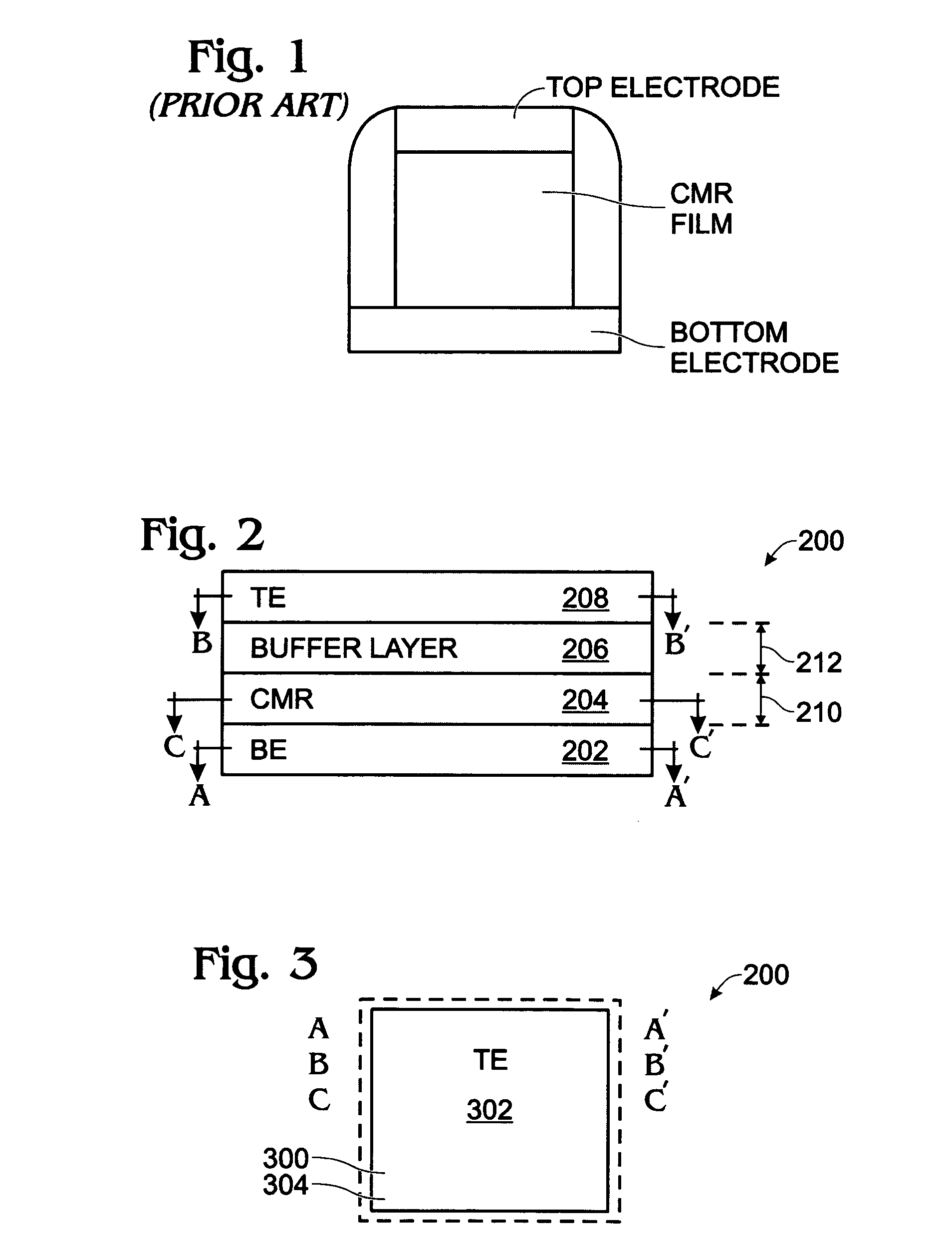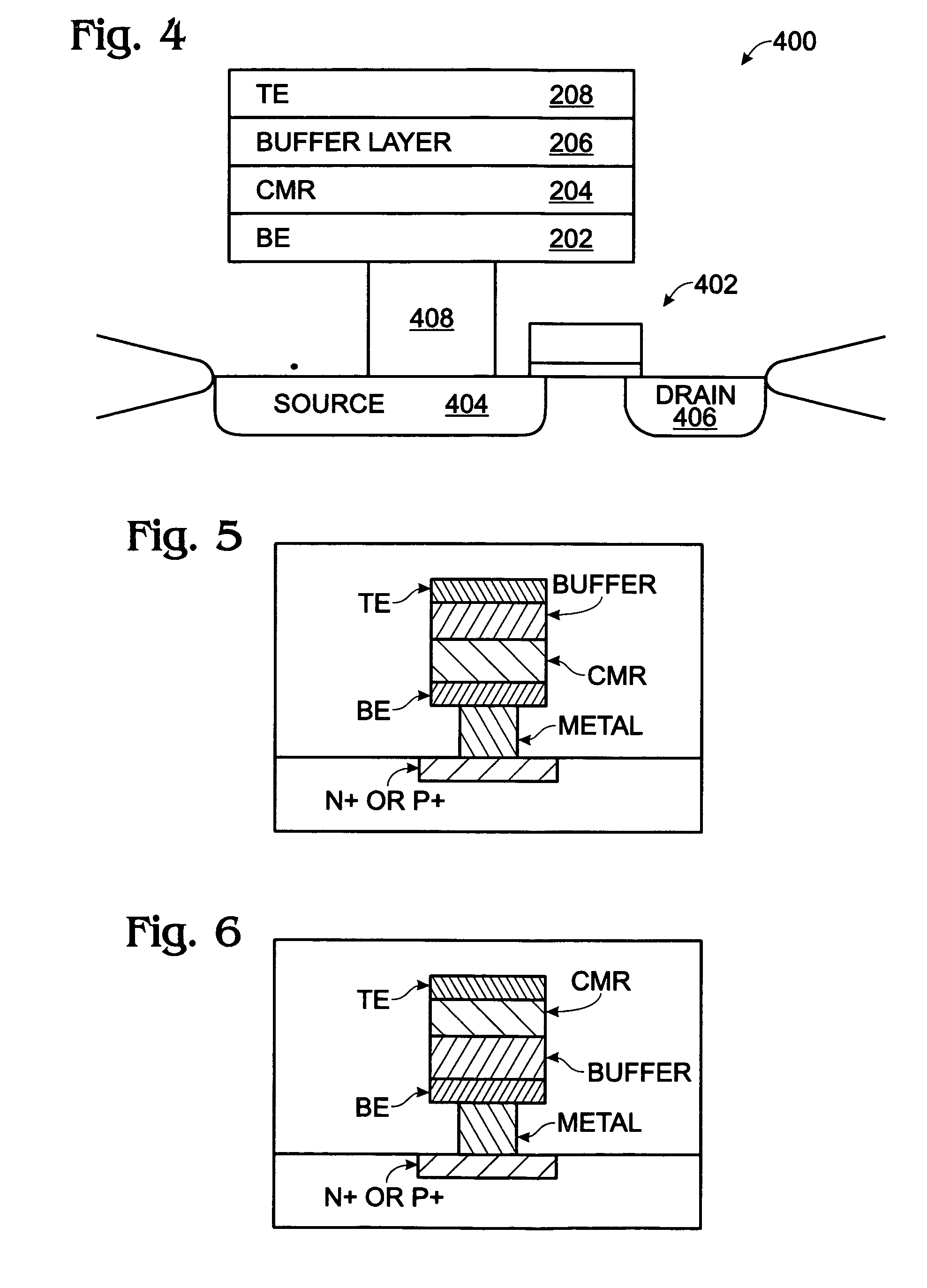Memory cell with buffered layer
a memory cell and buffer layer technology, applied in the field of thin film resistance memory devices, can solve the problems of bipolar or unipolar, memory devices, and inability to change the cmr resistance, and achieve the effect of reliable programming
- Summary
- Abstract
- Description
- Claims
- Application Information
AI Technical Summary
Benefits of technology
Problems solved by technology
Method used
Image
Examples
Embodiment Construction
[0023]FIG. 2 is a partial cross-sectional view of the present invention buffered-layer memory cell. The memory cell 200 comprises a bottom electrode (BE) 202 and a CMR memory film 204 overlying the bottom electrode 202. A memory-stable semiconductor buffer layer 206 overlies the CMR memory film 204 and a top electrode (TE) 208 overlies the semiconductor buffer layer 206. Although the buffer layer 206 is shown adjacent the top electrode 208, in other aspects (see FIG. 6), the buffered layer 206 is adjacent the bottom electrode 202 and the CMR memory film 204 is adjacent the top electrode 208.
[0024]FIG. 3 is a plan view of the memory device 200 of FIG. 2. Considering both FIGS. 2 and 3, the top electrode 208 and bottom electrode 202 need not be asymmetric for the memory device 200 to be bipolar programmable. The programming aspects of the invention are discussed in more detail below. Alternately stated, the bottom electrode 202 has an area 300 (marked in phantom with dotted lines), w...
PUM
 Login to View More
Login to View More Abstract
Description
Claims
Application Information
 Login to View More
Login to View More - Generate Ideas
- Intellectual Property
- Life Sciences
- Materials
- Tech Scout
- Unparalleled Data Quality
- Higher Quality Content
- 60% Fewer Hallucinations
Browse by: Latest US Patents, China's latest patents, Technical Efficacy Thesaurus, Application Domain, Technology Topic, Popular Technical Reports.
© 2025 PatSnap. All rights reserved.Legal|Privacy policy|Modern Slavery Act Transparency Statement|Sitemap|About US| Contact US: help@patsnap.com



